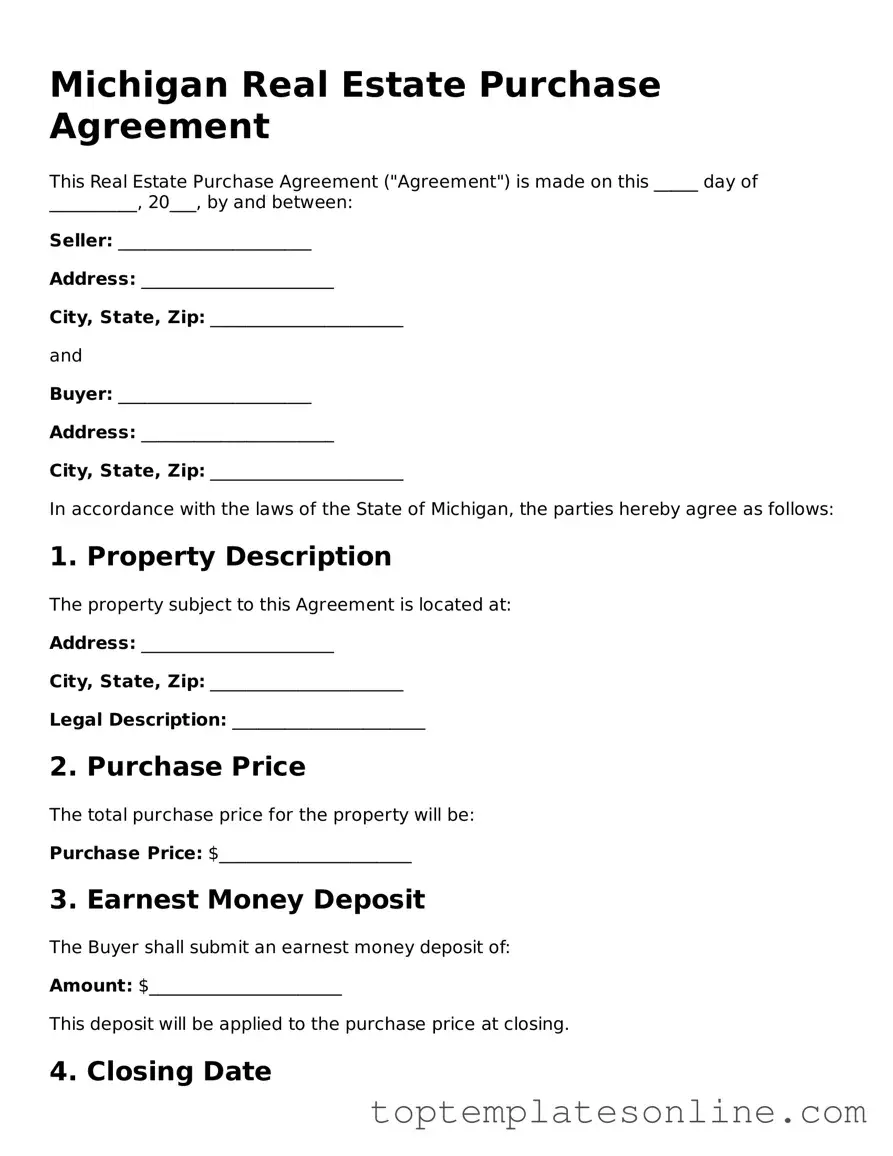Blank Real Estate Purchase Agreement Template for Michigan State
The Michigan Real Estate Purchase Agreement is a legal document that outlines the terms and conditions of a property sale between a buyer and a seller. This form serves as a binding contract, detailing the obligations of both parties throughout the transaction. Understanding its components is essential for a smooth and successful real estate deal in Michigan.
Customize Real Estate Purchase Agreement Here
